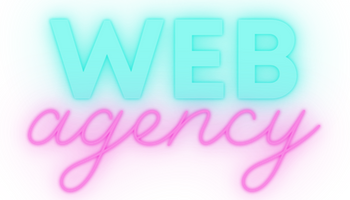When you want to create a website, the crucial step is to go from the graphic mock-up to a functional version in HTML and CSS. But how do you go about this? In this article, we’ll take you step-by-step through the key stages involved in integrating a mock-up in HTML and CSS efficiently and professionally. Whether you’re a beginner or an expert, follow our tips and techniques to create a quality website.
What’s a website mock-up ?
The mock-up of a website is a graphic representation of the site’s structure, layout, design and functionality. It allows you to visualize the website’s final appearance before its creation. Mock-ups can be produced in the form of sketches, drawings or digital mock-ups using graphic design software such as Photoshop, Sketch, Figma and others. The mock-up is a valuable tool for designers, developers and customers to get a clear idea of what the final website will look like, and to facilitate HTML and CSS integration.
Why is the mock-up important for HTML and CSS integration?
The mockup is important for HTML and CSS integration, because it serves as a visual guide for web developers. It allows them to visualize the website’s final appearance and identify the various elements that make it up. The mock-up also provides information on page layout, colors, fonts, images, animations and so on. By integrating the mock-up in HTML and CSS, developers can ensure that the final website meets the customer’s expectations in terms of design and functionality. The mock-up also facilitates communication between the various members of the development team, as it enables everyone to understand the website’s overall objective and the details of its layout.
What tools and programming languages are needed to integrate a mock-up in HTML and CSS?
To integrate a mockup in HTML and CSS, the tools and programming languages required are:
- Code editor: A code editor such as Visual Studio Code, Sublime Text or Atom is essential for writing and editing HTML and CSS code.
- HTML: HTML (Hypertext Markup Language) is the markup language used to structure the content of a web page. It is used to create elements such as headings, paragraphs, images, links, etc.
- CSS: CSS (Cascading Style Sheets) are used to define the formatting and appearance of HTML elements. They allow you to modify the color, font, size, position and other attributes of HTML elements.
- CSS preprocessors: CSS preprocessors such as Sass or Less enable you to write CSS code more efficiently using functions, variables and loops.
- Front-end frameworks: Front-end frameworks such as Bootstrap, Foundation or Materialize can facilitate integration by providing layout templates, reusable components and predefined styles.
Using these tools and languages, developers can create dynamic and
How to integrate a mockup in HTML and CSS
Here are the steps to follow to integrate a mockup in HTML and CSS:
Step 1 – Analyze the mockup
Before starting integration, it’s important to analyze the mock-up to understand its structure and the elements that make it up. It’s also important to check whether the mockup is responsive, i.e. whether it’s suitable for different devices (computers, tablets, smartphones).
Step 2 – Create the HTML structure
Once the layout has been analyzed, it’s time to create the HTML structure. To do this, it’s important to divide the mockup into different sections and create HTML tags for each element of the mockup (headings, paragraphs, images, etc.).
Step 3 – Add CSS styles
After creating the HTML structure, it’s time to add the CSS styles. To do this, it’s important to define CSS classes for each HTML element and apply the corresponding styles to each class.
Step 4 – Test and debug
After integrating the HTML and CSS mockup, it’s important to test the website to make sure everything is working properly. It’s also important to debug the code to correct any errors.
Step 5 – Optimize for search engines
Finally, it’s important to optimize the website for search engines by using HTML tags such as the “title” tag and the “meta description” tag. It’s also important to optimize images by using “alt” tags to describe their content.
Tips for efficient HTML and CSS layout integration
Here are a few tips for integrating a mockup in HTML and CSS efficiently:
Plan before you code
Before you start coding, plan and d’organize your work by determining the different sections of the layout and the corresponding CSS styles.
Use tools and resources
Then use tools and resources (CSS frameworks, preprocessors, code generators or templates). This will save you time and optimize your work.
Respect standards
By the way, you also need to respect HTML and CSS coding standards. This will facilitate website maintenance and evolution. This includes the use of consistent class names, correct indentation of the code and the use of comments to explain the code.
Test regularly
“In addition, you need to test the website regularly to make sure everything is working properly. You can use tools such as web browsers, emulators or compatibility testing tools.
Pay attention to detail
Finally, pay attention to details such as color consistency and image size, as well as margins and spacing. This is to ensure an optimal user experience.









